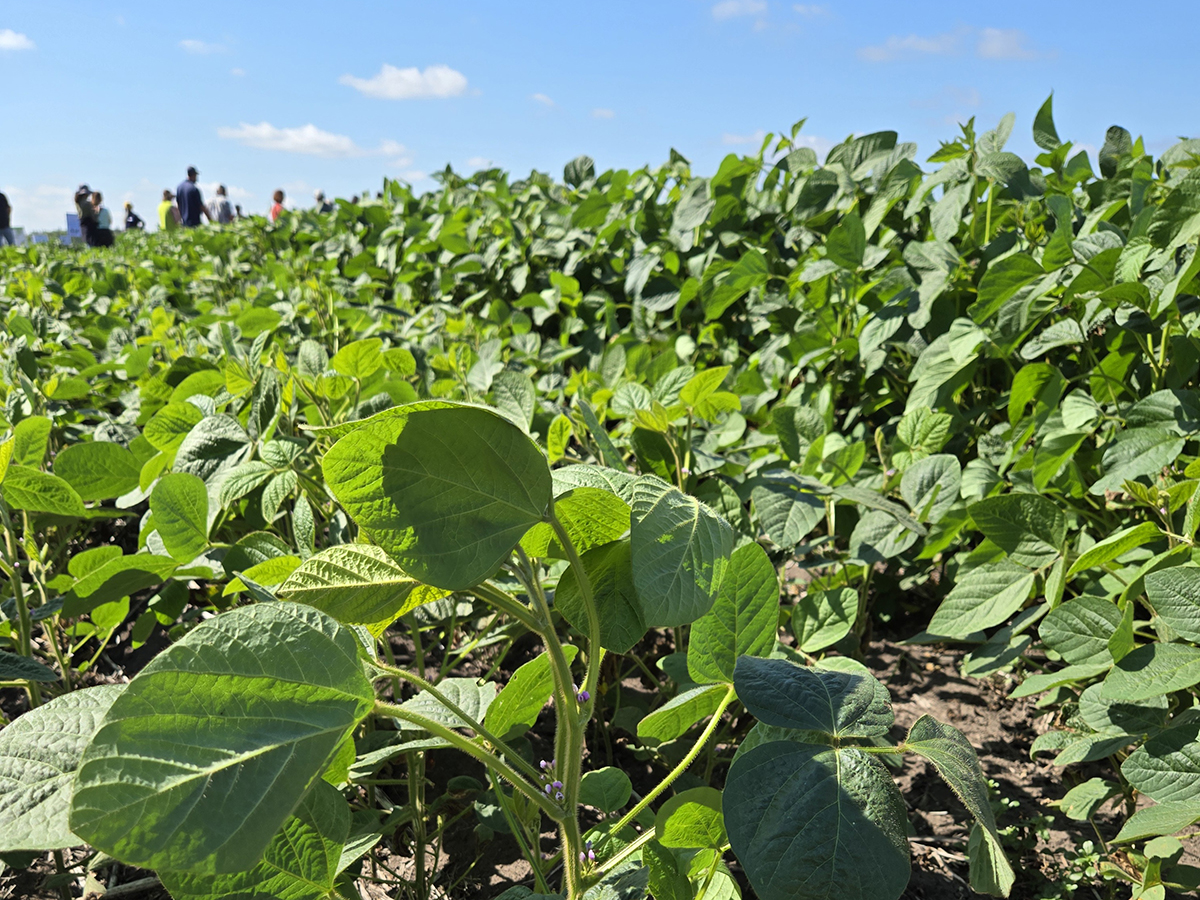TERMUENDE, Sask. – Dirty dugout water doesn’t look appetizing to humans.
Cattle, as they lurch down muddy slopes to slake their thirst with excrement-contaminated brown water, think much the same, researchers say.
And if cattle are reluctant to drink, it can mean half a pound less of weight gain per day.
Keeping water clean will encourage cattle to drink more, eat more and gain weight faster.
Researchers at the Prairie Farm Rehabilitation Administration are demonstrating pumping and aeration systems on dugouts at the Western Beef Development Centre’s farm at Termuende, in central Saskatchewan.
Read Also

Spider mites big soybean problem this season
Spider mite issues have been geographically limited but significant where they occur, said John Gavloski, an entomologist with Manitoba Agriculture.
Each dugout is fenced so cattle cannot get to the water. They are also kept off the dugout’s banks.
This is important, said PFRA researcher Clint Hilliard, because vegetation on dugout slopes stabilizes the soil and traps sediment and nutrients flowing in with runoff water.
A manual pump, which cattle learn to operate, can provide water from remote locations and dugouts. An animal will press its nose into a flat paddle in the water trough to pump water from the dugout. A single pump like this, which costs roughly $450, can supply enough water for 30 cow-calf pairs.
This method prevents mud from being tracked into the dugout and keeps excrement away.
Aeration is another way of to increase water quality and palatability for cattle.
If water doesn’t have air pumped through it, a layer of water at the bottom of a dugout will turn anaerobic. It will bring swamp gases such as hydrogen sulfide and methane out of the mud and leach phosphorus from the soil.
Phosphorus promotes algae growth and some algae are toxic.
Aeration churns the water, which prevents formation of an anaerobic layer.
All aeration systems need power, but Hilliard said wind power, an abundant and time-tested prairie power source, can supply enough through a small windmill to provide water for 100 cow-calf pairs.
The PFRA demonstration uses a small windmill, two 12-volt batteries that can supply a five-day reserve, a floating quarter -horsepower pump and a 1,900-litre trough.
The system costs about $2,300.
A $2,900 solar powered pumping system that can provide enough water for 250 cow-calf pairs is also being demonstrated.
It uses four 42-watt solar panels to fill a 1,900-litre trough. A float switch stops the pump once the trough is full.
Solar power can also be used to aerate a dugout. The PFRA is demonstrating a system that runs for about six hours a day. It uses two 51-watt solar panels.
Hilliard said no single system will be perfect for all operations and dugouts.
But by showing producers several affordable options, he hopes producers will be able to gain more from the same resources.
“They are suitable for different situations and the idea is to get the right match,” said Hilliard.
“We’re trying to take some of the grief out of decision making for remote watering by showing them the options and try to get the right one for them.”















